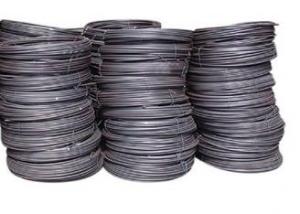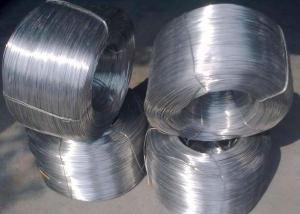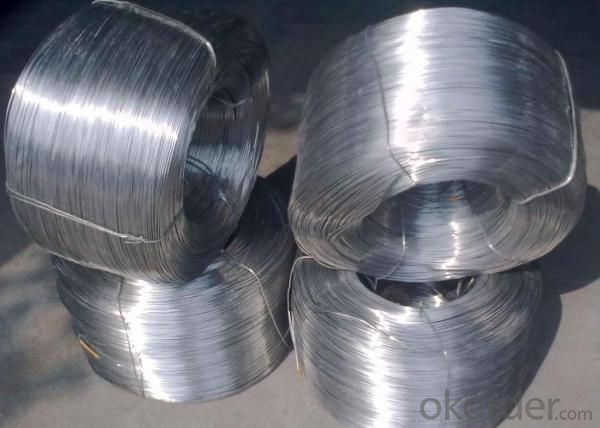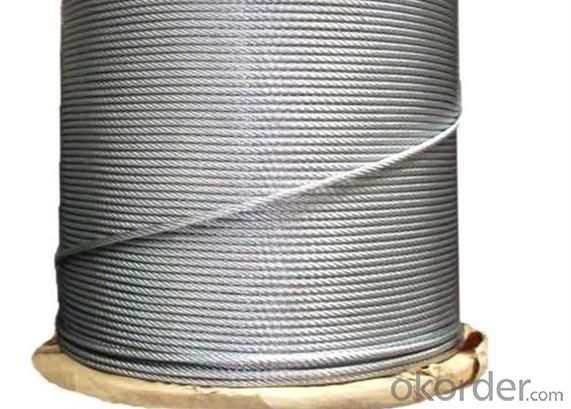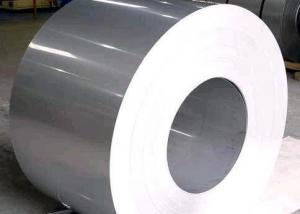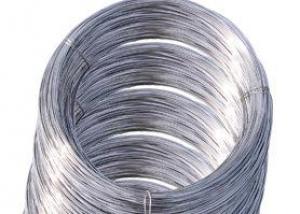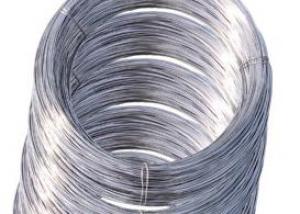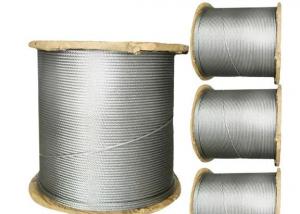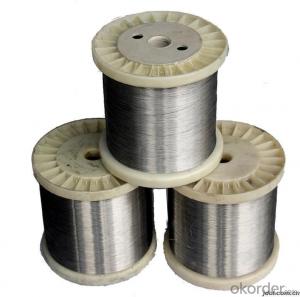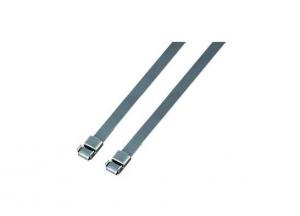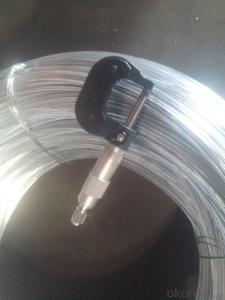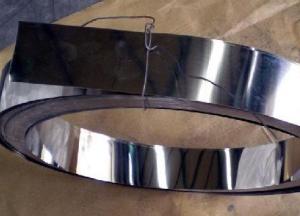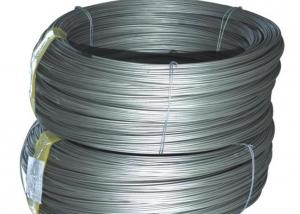Prime Stainless Steel Wire
- Loading Port:
- China Main Port
- Payment Terms:
- TT or LC
- Min Order Qty:
- 1 Ton m.t.
- Supply Capability:
- 2000 Tons Per Month m.t./month
OKorder Service Pledge
OKorder Financial Service
You Might Also Like
304 Stainless Steel Wire
1.Grade: SS 200,300,400 series
2.Dia: 0.1mm-100mm
3.Length:500m-2000m/Reel
4.Surface: Bright
5.Certificate: Fortune 500, SGS, ISO 9001:2008
6.Test: Salt Spray over200 hours
7.MOQ:500kg
8.Delivery: Within 20 days
9.Packing: Reel, wooden box or according to your requirement
10.Payment terms: China Main Port or CIF ANY PORT
11. Application: Tie wire, pins, lashing, forming wire, filters, gaskets, elevators, safety wire, shaped and flat wire, conveyors, jewelry, springs, brush welding, electrical, wire line, craft and many more applications.
|
Main Grades |
C % |
Si % |
S % |
P % |
Mn % |
Cr % |
Ni % |
Mo % |
Cu % |
|
S30400 |
<0.08 |
<0.75 |
<0.015 |
<0.045 |
<2 |
18.05-19 |
8.01--8.25 |
<0.6 | |
|
304H |
0.04-0.1 |
<0.75 |
<0.015 |
<0.045 |
<2 |
18.05-19 |
8.01--8.25 |
<0.5 | |
|
304Hc1 |
0.03-0.05 |
<0.75 |
<0.015 |
<0.045 |
<2 |
18.05-19 |
8.01-8.25 |
1.2-1.6 | |
|
304Hc |
0.03-0.05 |
<0.75 |
<0.015 |
<0.045 |
<2 |
18.05-19 |
8.01--8.25 |
2-3 | |
|
304Hc3 |
0.03-0.05 |
<0.75 |
<0.015 |
<0.045 |
<2 |
18.05-19 |
8.01--8.25 |
3-3.5 | |
|
304ES |
<0.08 |
<0.75 |
<0.015 |
<0.045 |
2-3 |
16.05-17 |
6.01-6.3 |
1.5-3 | |
|
304M2 |
0.05-0.08 |
<0.75 |
<0.015 |
<0.045 |
2-3 |
18-18.5 |
7-8.1 |
<0.6 | |
|
304M3 |
0.05-0.08 |
<0.75 |
<0.015 |
<0.045 |
2-3 |
18-18.5 |
8.01-8.25 |
<0.6 | |
|
304L |
<0.035 |
<0.75 |
<0.015 |
<0.045 |
<2 |
18.05-19 |
8.01--8.25 |
<0.6 | |
|
321 |
0.04-0.08 |
<0.75 |
<0.015 |
<0.045 |
<2 |
17-18 |
8.01--8.25 |
||
|
316L |
<0.035 |
<0.75 |
<0.015 |
<0.045 |
<2 |
16.05-17 |
10.01--10.35 |
2.01-2.2 |
<1 |
|
316 |
0.04-0.08 |
<0.75 |
<0.015 |
<0.045 |
<2 |
16.05-17 |
10.01--10.35 |
2.01-2.2 |
<1 |
|
316LCu |
<0.035 |
<0.75 |
<0.05 |
<0.045 |
<2 |
16-17 |
10-10.5 |
2-2.25 |
|
|
ER316L |
<0.04 |
0.65 |
<0.03 |
<0.04 |
1.0-2.5 |
18-20 |
11.1-12 |
||
|
201CU |
<0.08 |
<0.75 |
<0.015 |
<0.045 |
8-9.5 |
13.05-14 |
4.01-4.25 |
2-3 | |
|
D667 |
<0.08 |
<0.75 |
<0.015 |
<0.045 |
13-14 |
13-14 |
0.7-1.5 |
1.5-3 | |
|
D665B |
<0.08 |
<0.75 |
<0.015 |
<0.045 |
14-16 |
10.05-11 |
<1.2 |
0.5--1.5 | |
|
202B |
0.1-0.15 |
<0.75 |
<0.015 |
<0.045 |
9-10 |
17.05-18 |
4.5-5 |
||
|
D669 |
0.08-1.0 |
<0.75 |
<0.015 |
<0.045 |
14.5-16 |
11-12 |
<1.2 |
0.5-1.5 | |
|
200CU |
<0.08 |
<0.75 |
<0.015 |
<0.045 |
11-12 |
13-14 |
1-2 |
1.5-2.5 |
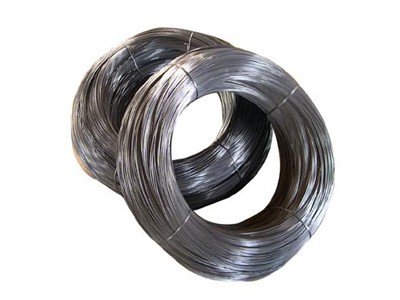
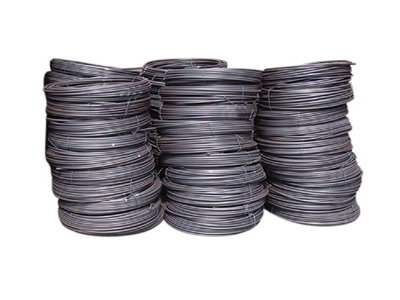
- Q: Is stainless steel wire flexible or rigid?
- Stainless steel wire is flexible.
- Q: What are the different types of stainless steel wire springs used in the jewelry industry?
- Stainless steel wire springs are widely utilized in the jewelry sector due to their durability, strength, and resistance against corrosion. These springs come in different types, each serving a specific function. 1. Torsion Springs: Jewelry applications extensively employ torsion springs. These springs store mechanical energy when twisted and offer rotational or torsional force. They are commonly found in clasps, hooks, and closures, guaranteeing a secure and dependable connection. 2. Compression Springs: Jewelry incorporates compression springs that are designed to withstand compressive forces and revert to their original shape when the force is removed. They provide tension or pressure in adjustable bracelets or rings. These springs facilitate flexibility and adjustability, accommodating various wrist or finger sizes. 3. Extension Springs: Extension springs, also known as tension springs, are employed to absorb and store energy when stretched. They are frequently utilized in chain link connectors or necklace extenders, allowing for length adjustment. These springs deliver the necessary tension to keep the jewelry securely in place. 4. Wire Forms: Wire forms are versatile stainless steel wire springs that can be tailored into different shapes and sizes. They are commonly utilized in jewelry for decorative purposes, such as crafting unique pendant or earring designs. Wire forms encourage creativity and flexibility in jewelry design. It is essential to note that stainless steel wire springs utilized in the jewelry industry are generally crafted from high-quality stainless steel alloys. These alloys offer exceptional resistance to corrosion, ensuring that the springs maintain their integrity and appearance over time, even when exposed to moisture or chemicals.
- Q: What are the different types of stainless steel wire rope terminations available?
- There are several types of stainless steel wire rope terminations available, each offering unique advantages and suitability for different applications. Some common types include: 1. Wire Rope Clips: Also known as wire rope clamps, these terminations comprise a U-bolt, saddle, and nuts. They are easy to install and provide a strong and secure connection. Wire rope clips are commonly used for light to medium-duty applications. 2. Swage Fittings: Swaging involves permanently attaching a fitting to the wire rope by compressing it using specialized tools. Swage fittings provide a clean and streamlined termination, ensuring excellent strength and durability. They are often used in heavy-duty applications and critical load-bearing situations. 3. Thimbles: Thimbles are metal sleeves that are inserted into the eye or loop of the wire rope to protect it from abrasion and wear. They help maintain the rope's shape and enhance its longevity. Thimbles can be used in conjunction with wire rope clips or swage fittings for added reinforcement. 4. Turnbuckles: Turnbuckles are adjustable fittings consisting of two threaded eye bolts connected by a metal body. They allow for easy tensioning and adjustment of the wire rope, making them ideal for applications that require periodic tightening or fine-tuning. 5. Nicopress Sleeves: Nicopress sleeves, also known as compression sleeves, are made of aluminum or copper and are used with a special tool to compress and secure the wire rope. They provide a reliable termination for light to medium-duty applications and are commonly used in marine and architectural applications. It's important to select the appropriate termination based on the specific requirements of your application, such as load capacity, environmental conditions, and desired level of permanence. Consulting with a knowledgeable supplier or engineer can help ensure the right choice for your stainless steel wire rope termination needs.
- Q: Is stainless steel wire resistant to UV radiation?
- Yes, stainless steel wire is generally resistant to UV radiation. Stainless steel is known for its high corrosion resistance, and this property extends to its ability to withstand the damaging effects of UV radiation. UV radiation from the sun can cause materials to degrade over time, leading to discoloration, weakening, and ultimately failure. However, stainless steel contains chromium, which forms a protective layer on the surface of the wire, shielding it from UV radiation and preventing degradation. This makes stainless steel wire a suitable choice for outdoor applications where exposure to sunlight is a concern.
- Q: What are the different types of stainless steel wire available?
- There are several different types of stainless steel wire available, including austenitic stainless steel wire, martensitic stainless steel wire, ferritic stainless steel wire, and duplex stainless steel wire. Each type has its own unique properties and characteristics, making them suitable for various applications.
- Q: Is stainless steel wire resistant to alkaline environments?
- Yes, stainless steel wire is generally resistant to alkaline environments.
- Q: How does stainless steel wire perform in high-load applications?
- Stainless steel wire excels in high-load situations because of its unique properties and characteristics. It is an ideal choice for applications that must endure heavy loads and harsh environments due to its high tensile strength and corrosion resistance. One of the main advantages of stainless steel wire in high-load situations is its exceptional strength-to-weight ratio. It possesses high tensile strength, enabling it to withstand significant force without deforming or breaking. This makes it suitable for applications requiring structural integrity and durability, such as in construction, engineering, and manufacturing. Furthermore, stainless steel wire offers outstanding corrosion resistance, even in extreme conditions. With a minimum of 10.5% chromium, it forms a passive oxide layer on its surface, safeguarding the wire against oxidation and rust. This corrosion resistance makes stainless steel wire well-suited for high-load situations in outdoor or corrosive environments, including marine, chemical, or oil and gas industries. Moreover, stainless steel wire demonstrates good thermal and electrical conductivity. This property is vital in high-load applications involving electrical or thermal conduction, like electrical wiring, heating elements, or medical devices. Another notable characteristic of stainless steel wire is its versatility in terms of formability and flexibility. It can be drawn into different diameters or shapes while maintaining its strength and structural integrity. This allows for customization and adaptability in high-load situations, enabling the wire to be used in various configurations and designs. In conclusion, stainless steel wire is an excellent option for high-load applications due to its high tensile strength, corrosion resistance, thermal and electrical conductivity, and versatility in formability. It provides the necessary durability, reliability, and performance required in demanding environments, making it a preferred material for a wide range of industrial and commercial applications.
- Q: Can stainless steel welding rod replace argon arc welding wire?
- But you'd better not.1 stainless steel wire is cheap. The electrode is damaged and the skin cost is high.2 stainless steel wire, the shortest length is 1 meters. Electrode is about thirty centimeters, replacement frequently. The welding wire head is surplus.
- Q: What is the difference between stainless steel wire and regular steel wire?
- Stainless steel wire and regular steel wire differ primarily in their composition and properties. Stainless steel wire is made from an alloy that contains at least 10.5% chromium, which forms a protective layer on the surface, preventing corrosion and rusting. On the other hand, regular steel wire does not have this protective layer and is more prone to corrosion. Another significant difference is their strength and durability. Stainless steel wire is known for its high tensile strength and resistance to breaking, making it suitable for applications that require strong and long-lasting wire. Regular steel wire, although strong, may not possess the same level of strength and durability as stainless steel wire. Moreover, stainless steel wire exhibits excellent heat resistance, making it suitable for high-temperature applications. It can withstand extreme temperatures without losing its structural integrity or undergoing significant physical changes. Regular steel wire, on the other hand, may deform or weaken under high temperatures. Stainless steel wire also has superior aesthetic properties compared to regular steel wire. It has a naturally polished and shiny appearance, making it more visually appealing. In contrast, regular steel wire may have a dull or rough surface finish. In summary, the key differences between stainless steel wire and regular steel wire lie in their corrosion resistance, strength, heat resistance, and aesthetic properties. Stainless steel wire offers a higher level of corrosion resistance, greater strength, and durability, as well as enhanced heat resistance and a more attractive appearance.
- Q: How to make clothes hanger for 4 mm 304 stainless steel wire
- In practical application, the steel which is often corroded by weak corrosive medium is called stainless steel, and the steel which is resistant to chemical medium is called acid resisting steel. Because of the difference in the chemical composition of the two,The former is not necessarily resistant to chemical media corrosion, while the latter are generally stainless. The corrosion resistance of stainless steel depends on the alloying elements contained in the steel
Send your message to us
Prime Stainless Steel Wire
- Loading Port:
- China Main Port
- Payment Terms:
- TT or LC
- Min Order Qty:
- 1 Ton m.t.
- Supply Capability:
- 2000 Tons Per Month m.t./month
OKorder Service Pledge
OKorder Financial Service
Similar products
Hot products
Hot Searches
Related keywords
